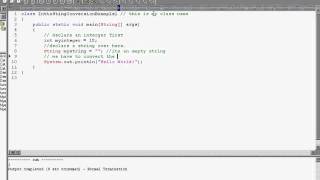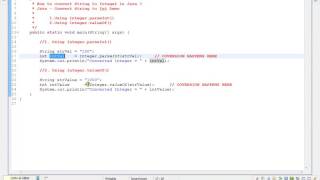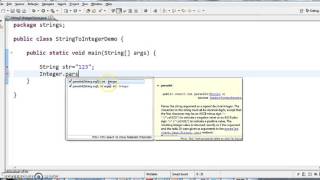Friday, 26 December, 2025г.
















Где искать: по сайтам Запорожской области, статьи, видео ролики
пример: покупка автомобиля в Запорожье
How to Convert INT to STRING in JAVA
Please check the description for more information and detailed explanation.
Converting an integer to a string is a common practice when programming. For some application processes, it's necessary to manipulate the format. Java makes converting an integer to a string easy through one of its internal functions.
In this example : Class name is InttoStingConversionExample1 and first we have to declare an integer and i have assigned 10 to that.
Declare a string and the string variable is mystring and i have assigned empty string that " ".
Next is how to convert. mystring = Integer.toString(myinteger);
we have to convert the interger 10 to string and we have to print it.
myinteger is 10 and its converted to string and the string value is printed , that is the same value 10 which is in string format.
Theory explanation.
1. Declare the integer variable. Before using any variable, you need to declare it for the compiler. Below is an example of a defined integer set to the value of 1.
int myInteger = 1;
2 . Declare the string variable. A string variable needs to be defined to save the converted integer. You can't save a string to a declared integer variable, so there needs to be a second variable for the conversion. Below is an example of a declared variable set to a value of an empty string.
String myString = "";
3 . Convert the integer to a string. Now the integer can be converted. The next line of code converts the myInteger variable and saves it to the myString value.
myString = Integer.toString(myInteger);
4 . Print the variable in the edit plus tool. To verify the conversion, print to the screen. To print in Java, use the code below.
System.out.println(myString);
Please feel free to comment!!!!!!!!!!!!!!!!!!!!!!!
Теги:
How-to String computer Science Declare integer How Convert INT STRING JAVA converted empty Integer toString System out println Print console code
Похожие видео
Мой аккаунт


 У вашего броузера проблема в совместимости с HTML5
У вашего броузера проблема в совместимости с HTML5


